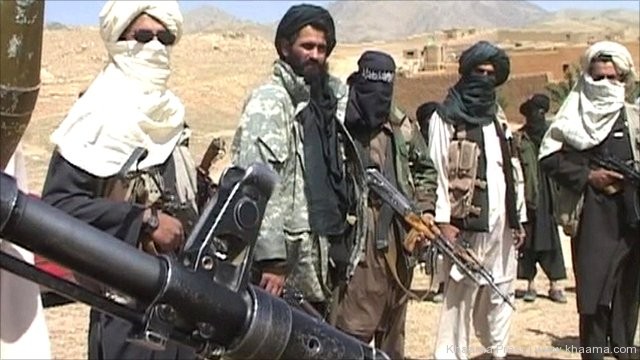100 DEAD AS WAVE OF ATTACKS ROCK AFGHANISTAN
Afghan Taliban

NEW DELHI: It has been a bloody weekend in Afghanistan, including three separate bombings in the capital Kabul in one day that killed at least 77 people and a suicide bombing targeting a militia in the northern province of Kunduz that killed at least 29.
In Kabul, the bloodshed began on Friday, when a massive truck bomb exploded outside an Afghan army base in a residential area called Shah Shaheed
Soon after, a Taliban suicide bomber, dressed in police uniform, detonated an explosives vest outside the gates of a police academy. Hours later, a bomb exploded in the Qasaba neighbourhood north of the airport, followed by gunfire as insurgents tried to storm a US special operations base known as Camp Integrity.
“A coalition facility [Camp Integrity] was attacked at 10.15pm, 7 August. One Resolute Support service member and two insurgent attackers were killed,” Col Brian Tribus, a spokesman for international forces in Afghanistan said in a statement, without providing further information. The individual is the fifth international service member killed in Afghanistan this year.
In Kunduz, the target of the attack was a militia commander, Qadir, who controls about 100 men, according to Hayatullah Amiri, the governor of Khanabad, a district in Kunduz. The attack is part of a larger Taliban push to gain control over Kunduz, with the government facing significant setbacks in recent months. The escalation in violence has led to the government turning to militias like that of Qadir’s, nulling efforts to disband them toward which large sums of international aid money had been spent.
The attacks come as deep divisions rock the Taliban, with longstanding leader Mullah Omar being confirmed dead. Omar’s death has also stalled a peace dialogue between the Afghan government and Taliban leadership.
In parallel with these events is an upswing in overall violence, with a recent UN report noting that the war in Afghanistan is killing or wounding increasing numbers of civilians, with women and children showing the sharpest rise in casualties. Figures for the first six months of 2015 put the year on the path to become the worst year yet in Afghanistan in terms of casualties.
The first six months of 2015 have seen a 13 percent rise in child casualties when compared with the same period last year. The number of women killed and injured has increased by a sharp 23 percent. Total casualties have gone up too, but only by 1 percent when compared to record levels in 2014, with 1591 civilians killed and 3329 injured.
The peace talks -- needed more than ever at this stage given the sharp increase in casualties -- hit a roadblock just as they started with Omar’s death. As the Taliban confirmed the news, the dialogue process was postponed, with reports indicating that the news had deeply fissured the already heterogenous Taliban. Omar’s death dealt a severe blow to the Taliban, removing a unified figure at a time that the group is riddled with factions -- especially over the prospect of talks with the Afghan government. The BBC, in fact, quoted a Taliban spokesperson saying that newly appointed leader Mullah Akhtar Mohammad Mansour had not been appointed "by all Taliban", going against Sharia law. It is also unlikely that Mansour will command the same loyalty as his predecessor, thereby widening the rift between those who want to make peace with Kabul and those who want to continue the insurgency.
Mansour has ties with Pakistan, and if it is true that Omar died a few years ago as alleged by the Afghan government but denied by the Taliban -- Mansour has been effectively leading the militant group for some time now. Nevertheless, confirmation of Omar’s death will push the cadres that were opposed to the talks over the fence, and will make violence in the troubled country worse.
Meanwhile, the people of Afghanistan bear the brunt of all the uncertainty. In regard to the first point, in its annual report released earlier in the year, the UN Mission in Afghanistan has said that the number of civilians killed or wounded in the troubled country climbed by 22 percent in 2014 to reach the highest level since 2009. Figures for 2015 show a similar upward trend. The UN agency documented 10,548 civilian casualties in 2014, the highest number of civilian deaths and injuries recorded in a single year since 2009. They include 3,699 civilian deaths, up 25 per cent from 2013 and 6,849 civilian injuries, up 21 per cent from 2013. Since 2009 -- when UNAMA began tracking casualties -- the armed conflict in Afghanistan has caused 47,745 civilian casualties with 17,774 Afghan civilians killed and 29,971 injured. The UN says that Taliban militants were responsible for 72 per cent of all civilian casualties, with government forces and foreign troops responsible for 14 percent.
The figures for this year are already more catastrophic, with the end to the insurgency no where in sight. The latest attacks, in fact, prove that a change in leadership will not weaken the Taliban, but make the insurgency harder to tackle and control.



